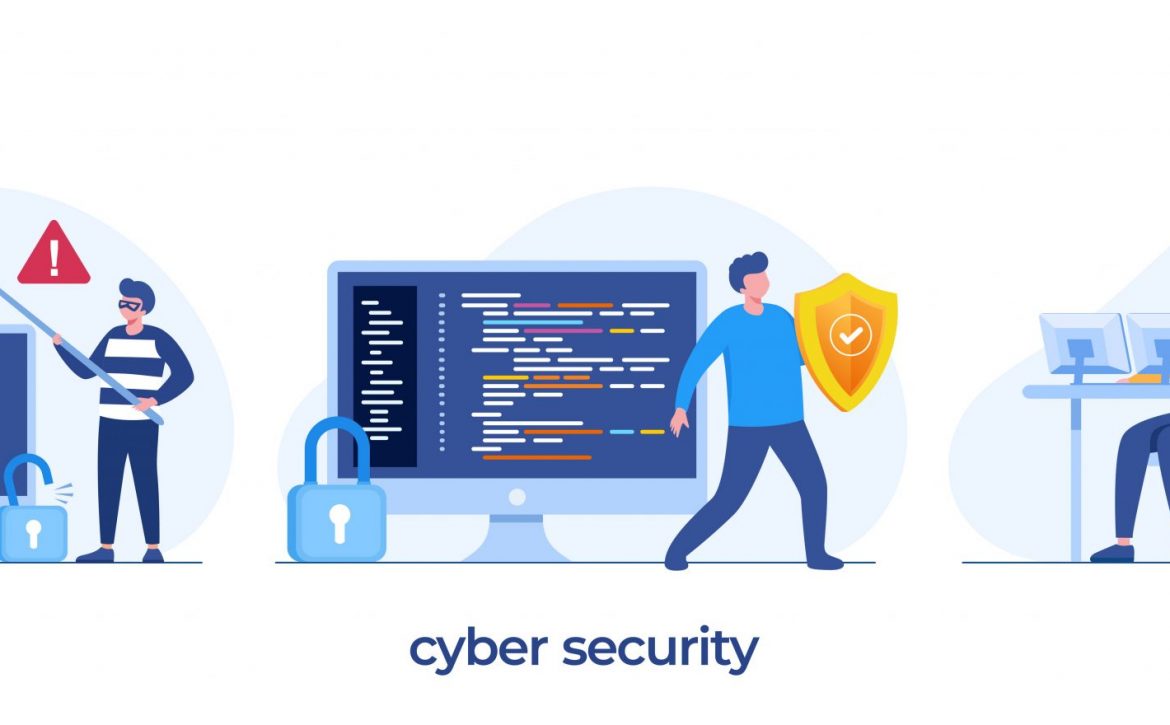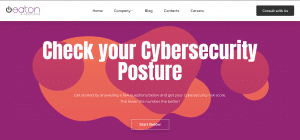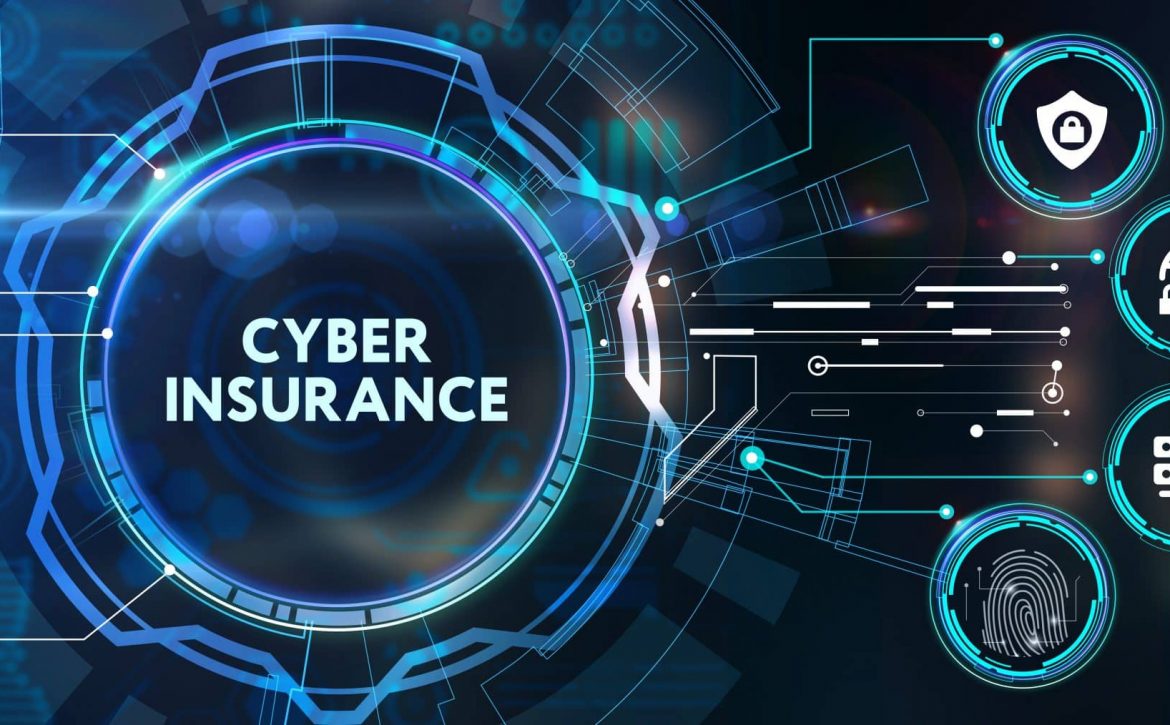Category: Featured Service
Cybersecurity is an Ongoing Process, Not a One-and-Done Introduction
Cybersecurity Is An Ongoing Process, Not a One-and-Done
Introduction
In today’s digital age, where data breaches and cyberattacks make headlines daily, cybersecurity has become a critical concern for individuals and organizations alike. The misconception that cybersecurity is a one-time task, a series of checkboxes to be ticked off, is a dangerously flawed notion. In reality, it’s an ongoing and dynamic process that requires constant vigilance, adaptation, and investment. This article explores why cybersecurity is an ever-evolving journey rather than a destination.
The Shifting Threat Landscape
One of the primary reasons why cybersecurity is an ongoing process is the constantly changing threat landscape. Cybercriminals are relentless in their pursuit of new attack vectors and vulnerabilities. As technology advances, so do the methods and tools used by hackers. From phishing attacks to ransomware, zero-day vulnerabilities, and beyond, the threat landscape is vast and evolving.
New vulnerabilities in software and hardware are discovered regularly, and it’s only a matter of time before malicious actors attempt to exploit them. To stay protected, organizations must continually update their security measures, evaluate new risks, and adapt their strategies to address emerging threats. Examples of cybersecurity threats include:
- Malware: Malicious software, including viruses, worms, Trojans, and ransomware, that is designed to infect and compromise computer systems. Malware can steal data, disrupt operations, or demand ransom payments.
- Phishing: A social engineering technique in which attackers impersonate trusted entities to trick individuals into revealing sensitive information, such as usernames, passwords, or financial data.
- Distributed Denial of Service (DDoS) Attacks: These attacks flood a network or website with traffic to overwhelm and disrupt the target’s normal operation, rendering it inaccessible to users.
- Man-in-the-Middle (MitM) Attacks: In MitM attacks, an attacker intercepts communication between two parties, potentially eavesdropping on sensitive information or altering data without detection.
- Insider Threats: Threats that originate from within an organization, where employees or other trusted individuals misuse their access privileges to steal data, cause damage, or sabotage systems.
- Zero-Day Vulnerabilities: These are security flaws in software or hardware that are unknown to the vendor and therefore unpatched. Attackers can exploit these vulnerabilities before they are discovered and fixed.
- Password Attacks: These encompass various techniques like brute force attacks, dictionary attacks, and password spraying, aiming to guess or crack user passwords to gain unauthorized access.
- SQL Injection: An attack on a web application’s database through malicious input, potentially allowing unauthorized access or data manipulation.
- Drive-By Downloads: Malicious code is downloaded and executed on a user’s system without their consent, often through visiting compromised websites or clicking on deceptive links.
- IoT Vulnerabilities: As the Internet of Things (IoT) devices proliferate, they can be exploited due to weak security features, potentially granting attackers control over devices or access to personal data.
- Data Breaches: Unauthorized access to sensitive data, often through network breaches or compromised user credentials, leading to the theft or exposure of personal information.
- Ransomware: Malicious software that encrypts a victim’s data, rendering it inaccessible until a ransom is paid to the attacker.
- Social Engineering: A broad category of attacks that exploit human psychology to manipulate individuals into divulging confidential information or taking specific actions.
- Supply Chain Attacks: Cybercriminals target an organization’s suppliers or third-party vendors to infiltrate their systems and compromise the target’s security.
- AI and Machine Learning Attacks: Attackers are using AI and machine learning to automate and enhance their attacks, making them more sophisticated and difficult to detect.
Technological Advancements
The rapid pace of technological advancements introduces new complexities to the cybersecurity equation. Innovations such as the Internet of Things (IoT), cloud computing, and artificial intelligence bring transformative benefits but also create fresh attack surfaces.
For example, IoT devices, from smart thermostats to wearable fitness trackers, are now integral to our lives and workplaces. However, their often lax security features can open doors for cyberattacks. There was a recent example of an Internet connected fish tank being compromised and unauthorized access to the network was achieved. As these devices become more ingrained in our routines, so do the risks they pose. Therefore, organizations must not only secure their existing infrastructure but also adapt to the evolving technological landscape to protect against novel threats.
Compliance and Regulatory Changes
Compliance standards and regulations, such as the General Data Protection Regulation (GDPR) and the Health Insurance Portability and Accountability Act (HIPAA), continue to evolve. These regulations are designed to protect individuals’ privacy and data, and they require organizations to implement stringent security measures. Staying compliant is a continuous effort that involves not only adhering to existing standards but also adapting to any changes in regulations.
Non-compliance can result in severe penalties, data breaches, and loss of trust. As regulations change, businesses need to ensure that their cybersecurity practices remain aligned with the new requirements.
The Human Element
The weakest link in any cybersecurity strategy is often the human element. Employees, no matter how well-trained, can inadvertently fall victim to social engineering tactics or make mistakes that expose sensitive information. Human behavior is not static, and education and awareness programs must be continuous to keep pace with evolving threats.
Moreover, the workforce itself is evolving. With the rise of remote work and bring-your-own-device (BYOD) policies, the attack surface has expanded. This requires ongoing education, training, and monitoring to ensure that employees remain security conscious.
Resource: KnowBe4 is the world’s largest integrated platform for security awareness training
Conclusion
Cybersecurity is an ongoing process. It is a dynamic and multifaceted discipline that demands constant attention and adaptation to the changing threat landscape, technological advances, compliance requirements, and human factors.
By understanding that cybersecurity is a continuous journey, individuals and organizations can better prepare themselves for the ever-evolving challenges of the digital world. Staying proactive, informed, and agile in the face of new threats is the key to safeguarding sensitive information and maintaining trust in an increasingly interconnected and vulnerable digital environment. Cybersecurity isn’t a destination; it’s a never-ending voyage toward a more secure digital world.
Check your cyber security status by taking our Cyber Security Quiz. Click Here
The Value of Proactive Cybersecurity Insurance Audits
The Value of Proactive Cybersecurity Insurance Audits
Introduction
In an age where digital landscapes are expanding at an unprecedented pace, the importance of robust cybersecurity measures cannot be overstated. Organizations of all sizes are grappling with the evolving threat landscape, recognizing that a cyberattack could potentially cripple their operations and reputation. As a response to this escalating risk, many businesses have turned to cyber insurance as a protective shield against financial losses stemming from cyber incidents. However, obtaining and retaining a cyber insurance policy can be costly and requires more than just paying premiums; it involves undergoing thorough cybersecurity insurance audits. When these audits are done in advance, it often improves the ease of getting cyber insurance as well as the rates. In this article, we delve into the vital significance of preparing for a cybersecurity insurance audit and how it can safeguard your organization in the face of a digital onslaught.
The Context: Escalating Cyber Threats
In recent years, cyber threats have evolved in sophistication and scope, ranging from ransomware attacks to data breaches and beyond. High-profile incidents involving major corporations have highlighted the crippling financial consequences of cyber incidents, including business interruption, legal liabilities, and reputational damage. In light of this, cyber insurance has become a pivotal tool for mitigating potential financial losses.
The Role of Cybersecurity Insurance Audits
A cybersecurity insurance audit is a comprehensive evaluation of an organization’s cybersecurity measures and risk management strategies, conducted by an independent third party on behalf of the insurance provider. Its primary purpose is to assess the organization’s preparedness for handling cyber threats and its capacity to mitigate potential damages. By undergoing a cybersecurity insurance audit, businesses demonstrate their commitment to cybersecurity and ensure that they are adequately prepared to face any potential cyber incident.
Key Benefits of Preparing for a Cybersecurity Insurance Audit
- Risk Identification and Mitigation: A cybersecurity insurance audit offers a fresh perspective on the organization’s vulnerabilities and potential areas of weakness. This proactive approach enables businesses to identify and address potential risks before they escalate into full-blown security breaches.
- Enhanced Cybersecurity Measures: Preparing for an audit compels organizations to bolster their cybersecurity measures, which leads to a more robust and resilient security posture. This, in turn, reduces the likelihood of successful cyberattacks and minimizes the extent of damage should an incident occur.
- Compliance Alignment: Many industries are subject to regulatory compliance standards that mandate specific cybersecurity requirements. Preparing for an audit ensures that the organization is aligned with these standards, avoiding potential legal and financial repercussions.
- Strengthened Incident Response Plans: An effective incident response plan is essential for minimizing the fallout of a cyber incident. Preparing for an audit prompts organizations to refine their incident response strategies, enabling them to react swiftly and effectively to any breach.
- Negotiating Favorable Insurance Terms: A well-prepared cybersecurity insurance audit can lead to more favorable insurance terms and premiums. Insurance providers are more likely to offer competitive rates to organizations that demonstrate a strong commitment to cybersecurity. We have seen material reductions in projected costs though cybersecurity audits.
- Improved Reputation and Stakeholder Trust: A successful cybersecurity insurance audit communicates to stakeholders, including clients, partners, and investors, that the organization takes cybersecurity seriously. This fosters trust and enhances the organization’s reputation in the marketplace.
Conclusion
The digital landscape’s evolving nature demands that organizations adopt a proactive and multifaceted approach to cybersecurity. Cyber insurance serves as a crucial safety net against the financial devastation caused by cyber incidents, but its efficacy is maximized through meticulous preparation for the accompanying cybersecurity insurance audit. By embracing these audits as opportunities to bolster cybersecurity measures, mitigate risks, and enhance overall operational resilience, organizations can fortify their defenses against an increasingly hostile cyber environment as well as potentially lower cybersecurity insurance costs. In this era of persistent cyber threats, the value of preparing for a cybersecurity insurance audit cannot be overstated—it is a strategic investment in safeguarding the organization’s future.
Eaton & Associates Can Help Your Organization Prepare
Do you need assistance preparing for a Cyber Security Insurance Audit? Eaton & Associates is ready to help. Click here to start.
Cyber Security Resources:
Ensuring DOJ Compliance for MSP Providers in Police Department Managed Services
Ensuring DOJ Compliance for MSP Providers in Police Department Managed Services
Managed service providers (MSPs) play a critical role in delivering compliant and reliable services to support the operations of police departments. Adhering to Department of Justice (DOJ) regulations is essential for protecting sensitive data, maintaining legal compliance, and establishing trust with law enforcement agencies. This article highlights the significance of DOJ compliance in MSPs serving police departments and emphasizes key considerations in this domain.
- Security and Confidentiality: To ensure DOJ compliance, MSPs must implement robust security protocols, including encryption, access controls, and secure storage, to safeguard sensitive information within police departments.
- Digital Forensics and Investigations: Adherence to DOJ compliance guidelines in digital forensics is crucial. MSPs should maintain the chain of custody, utilize approved tools, and document procedures to ensure the admissibility of digital evidence in legal proceedings.
- Video Surveillance and Analytics: DOJ regulations regarding video retention, privacy, and analytics must be followed. MSPs should deploy secure video management platforms, employ facial recognition technologies, and adhere to DOJ guidelines for effective and compliant video surveillance within police departments.
- Collaboration and Information Sharing: Facilitating secure interagency collaboration and information sharing is paramount. MSPs should provide compliant communication platforms, secure data repositories, and case management systems that meet DOJ standards for police departments.
- Emergency Communication Systems: MSPs must ensure that emergency call centers, radio systems, and dispatch operations comply with DOJ requirements. This ensures reliable communication channels during critical situations within police departments.
- Training and Documentation: Comprehensive training aligned with DOJ compliance guidelines is essential. MSPs should educate police department personnel on tool usage, data handling practices, and adherence to regulations. Clear documentation of training sessions, user guides, and policies further supports DOJ compliance efforts.
DOJ compliance is of utmost importance for MSPs serving police departments. By implementing specialized tools, robust security measures, and strict adherence to DOJ regulations, MSPs deliver reliable, compliant, and effective managed services. Upholding DOJ guidelines ensures the protection of sensitive data, maintains legal compliance, and fosters trust between MSPs and police departments.
Key Factors to Evaluate When Choosing a Managed Services Provider (MSP)
Key Factors to Evaluate When Choosing a Managed Services Provider (MSP)
Evaluating a managed services provider (MSP) is crucial for finding the right partner to meet your organization’s IT needs. Consider factors like expertise, service offerings, security measures, scalability, customer support, and compliance. This guide outlines the essential aspects to assess when selecting an MSP.
When selecting a managed services provider (MSP) for your organization, it is crucial to prioritize the best option rather than focusing solely on cost. MSPs offer valuable benefits such as specialized expertise and proactive IT management. To make an informed decision, consider the following key aspects when assessing an MSP:
- Expertise and Experience:
- Assess the MSP’s expertise in managing the specific technologies and systems your organization relies on.
- Consider their certifications, industry partnerships, and track record of successful projects.
- Service Offerings:
- Review the range of services provided by the MSP and determine if they align with your requirements.
- Evaluate if they offer comprehensive support, including infrastructure management, cloud services, security solutions, network monitoring, data backup, and disaster recovery.
- Service Level Agreements (SLAs):
- Evaluate the MSP’s SLAs to understand their commitment to service availability, response times, and problem resolution.
- Ensure the SLAs align with your business needs and expectations.
- Security Measures:
- Assess the MSP’s security protocols, including data protection, encryption, intrusion detection, vulnerability management, and compliance with industry regulations.
- Verify their ability to safeguard your organization’s sensitive information.
- Scalability and Flexibility:
- Consider if the MSP can accommodate your organization’s growth and evolving needs.
- Assess their ability to scale services, adapt to changing technology requirements, and align with your business objectives.
- Customer Support and Communication:
- Evaluate the MSP’s customer support model, including help desk services, ticketing systems, and escalation procedures.
- Prioritize clear and timely communication and consider their communication channels and responsiveness.
- References and Case Studies:
- Request references or case studies from the MSP to gain insights into their past performance and client satisfaction.
- Contact existing or previous clients to gather feedback on their experience with the provider.
- Financial Stability:
- Assess the MSP’s financial stability and long-term viability.
- Consider their company size, financial reports, client base, and overall reputation in the industry.
- Compliance and Regulations:
- Evaluate whether the MSP has experience in complying with relevant regulations, such as HIPAA or GDPR, if your organization operates within specific frameworks.
- Cost and Value:
- Evaluate the MSP’s pricing structure and contract terms.
- Compare their costs with other providers, taking into account the value they deliver in terms of service quality, reliability, and expertise. When it comes to something as important as your technology, the best option may not always be the least expensive.
Choosing the right managed services provider (MSP) requires careful evaluation of their expertise, service offerings, security measures, scalability, customer support, and compliance capabilities. By conducting thorough due diligence, comparing offerings, and engaging in discussions with multiple MSPs, you can make an informed decision based on your organization’s unique needs and priorities. Selecting a reliable and suitable MSP will ensure effective IT management, allowing you to focus on your core business competencies.
Advantages of Managed IT Services Vs. Break-Fix Solutions
There is a fundamental difference
Bay Area IT Security – Protecting Your Data with Role-Based Network Access
Learn how role-based network access control can help protect your data… | Network Security Services San Francisco Bay Area IT Security
Questions to Ask an IT Company Before You Hire Them
Choosing the right IT managed services company requires consideration. Before you hire an IT company in the Bay Area, ask the right questions.
San Francisco Bay Area office 365 migration
San Francisco Bay Area office 365 migration
When it comes to San Francisco Bay Area office 365 migration you need the right team.
Migrating to Office 365 should be a relatively smooth process but it can be complicated.
Eaton & Associates Migrate-IT Program has you covered!
The Eaton Migrate-IT Program Includes:
- No cost consultation and no-obligation proposal
- Per mailbox migration pricing & Active Directory synchronization
- Reconfiguration of Microsoft Outlook Clients (Profiles, PSTs, Address Auto completes, and Signature blocks)
Avoid email downtime and hire Eaton & Associates to ensure a smooth transition to your new Office 365 Platform!
Why Eaton & Associates?
- Locally owned and operated
- We’re techies with personality and focused on strong client relationships
- We work onsite or remotely depending on your needs
- We do much more than just Migrating-IT… something changes, we have you covered
- We service the entire San Francisco Bay Area-North, South, Peninsula, & East Bay
Contact us today for a no-cost consultation and proposal.
Phone: 415-282-1188
Email: hello@eatonassoc.com
Web: Eatonassoc.com
Eaton & Associates, based in the San Francisco Bay Area for more than 25 years, provides IT Services & Products to a wide range of clients, including Government, Enterprise, Small and Medium businesses, and Non-Profit Organizations. Services include Managed IT Services, Professional IT Services, and IT Project Management & IT Consulting. Eaton & Associates is a strategic partner with most technology vendors such as HP Enterprise & Aruba Networks, Palo Alto Networks, Nutanix, Nimble Storage, Cisco, Rubrik, Dropbox for Business, Dell, VMware, Citrix, Microsoft, Apple, and many more top technology vendors.
San Francisco Bay Area IT Office Move
Introducing Eaton & Associates San Francisco Bay Area IT Office Move :
When it comes to moving your IT equipment you need the right team. Imagine walking into your new office and all your computers and IT equipment are set up and ready to use. Eaton & Associates has you covered!
The Eaton Move-IT Program Covers:
• No cost consultation and no-obligation proposal
• Equipment asset tagging and inventory
• Relocation and setup of ALL IT equipment from workstation to networks and beyond
Have all your systems up and running the day you walk into your new office!
Why Eaton & Associates?
• Locally owned and operated
• Our movers are techies…
• We have our own wheels and your equipment is safe from door to door.
• We do much more than just moving IT… something changes, and we have you covered
• We service the entire Bay Area-North, South, Peninsula, & East Bay
Interested in San Francisco Bay Area IT office move? Contact our team for a no-cost consultation and proposal today.
Phone: 415-282-1188
Email: hello@eatonassoc.com or visit us at Eatonassoc.com












